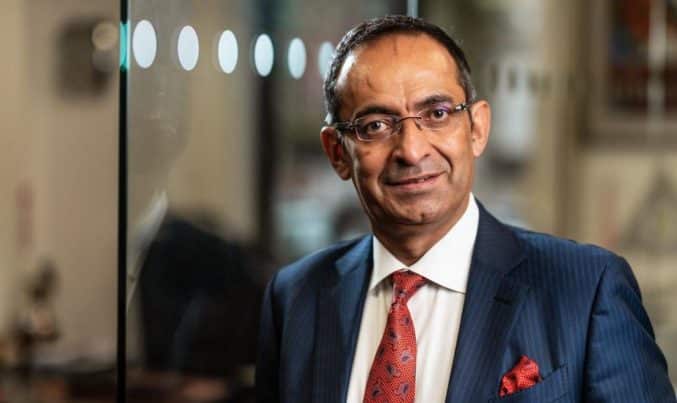Is this the end of Bridging Finance as an investment asset class?
By Bridging Loan Directory
The demand for Bridging Finance and the recent growth in providers of bridging finance continue to establish this sector as a credible alternative to traditional banking providers. With the recent adverse publicity surrounding the suspension and winding down of the Connaught Income Funds, and the impending high court hearing against West One Loans, will this cast a shadow over the entire investment asset class?
We talk to Steve Green, CEO of Graf Mortgage Corporation, an established provider of bridging finance to property professionals and Investment Adviser to UK Secured Finance Fund PLC.
Do you feel the asset class will remain an attractive credible alternative for those investors seeking a reliable and consistent return?
Absolutely. Bridging Finance is almost unique in being able to deliver above average returns which are both predictable yet secured. We at Graf continue to experience strong demand from our borrowers and as traditional Bank appetite for property lending remains limited and slow which isn’t expected to change in the UK for the foreseeable future, this presents significant opportunities for Graf and our Fund.
Is there anything one should look out for with the parties in this market
Yes and no, the parties are important in securing the return from the lending but in terms of security of capital, the structure is far more important and what the lending company can or cannot do. Directorship of parties can change, they have with Tiuta, so can the lending practices unless they are prevented from doing so by independent overseers who have comprehensive guidelines to work to. Whether it is me or somebody else running Graf, the fund lending is prescribed in the documentation so everyone knows what they are getting.
Have you taken any additional steps since the issues with the Connaught Fund have come to light?
No, UKSFF was established in 2010 and built with investor protection as the priority. We have strict rules; MAXIMUM 70% Loan to Value (“LTV”) per loan not an average, no Development Properties, no Owner Occupiers, to name but a few and all of which are clearly laid out in the Offering Document. Additionally we are not permitted to carry out second charge loans as they are impossible to control and it is our policy not to charge interest up front. If a loan has the potential to become a problem, one early warning sign is that interest doesn’t get paid.
Does the above give any issues with arrears?
Good question but firstly we must define what we mean by arrears. We treat a loan as being in arrears if a payment has not been made by the time the next monthly interest payment is due. Using this definition, we currently have no arrears and they are extremely rare with our customers, most of whom are repeat customers who like our service to help them complete their deals and we obviously don’t lend to customers that don’t pay on time as we still need to pay the fund on time.
We understand that the issues with Connaught concerned a number of loans which were under secured – could this happen to other funds?
It could! This all depends on whether or not each particular fund follows a similar model with a similar level of scrutiny. When we built UKSFF, whilst we had the need for funding for our business, we felt the best way to achieve this was to have as robust a structure and process as was possible to protect investors. As a result we chose an Isle of Man based OEIC rather than a partnership and to have detailed lending practice and restrictions in our Offering Document. Our Regulated Manager who fulfils all the roles and much more as an “Operator” does with a partnership, as part of their duties has to be satisfied that the lending complies with this. In addition, we are fundamentally different to every other product in the market I have come across in that Graf does not have a floating facility with the fund. Each loan Graf makes to a borrower using fund money has an equivalent loan from the fund to Graf for the same term and the same or lesser amount. Therefore not only does the regulated manager and the fund non-exec directors have full knowledge of loans being granted they also know when to expect the money back.
Does this not cause administrative hurdles?
Yes it does but I know that if I were investing my money in a fund of this nature, I’d want I’d want to know exactly how my money would be used and have independent parties overseeing this for me. Good lending takes skill and experience but the hard bit is making sure you’ll get all the money back!
Surely the key to Bridging Finance is speed of completion and property investment is hardly an exact science so why do your customers come to you?
The market demands quick completion but that doesn’t mean corners can be cut. Graf’s processes are quick & efficient with professionals involved at every step including our borrowers who are experienced and wealthy property investors with reputations to uphold. You’re quite right about property investment not being an exact science, it’s inevitable from time to time that lending is reviewed and loan terms may need to be extended but if that occurs we start from scratch and re-underwrite to ensure it continues to meet criteria, in the highly unlikely scenario that it failed to comply with our published policy then it would be foreclosed rather than extended.
We don’t just provide finance, Graf understand the needs of our customers and have the necessary expertise to ensure they continue to return which leaves us with the favourable but ongoing dilemma of demand for quality lending far, far outstripping supply.
A key part of our model, is that we only lend to experienced property investors. We like to call this Lending for Grown ups.
So you’re confident all the angles have been covered?
It doesn’t stop there and don’t just take our word. PWC are auditors to UKSFF and are currently undertaking our second annual audit of the fund which includes a full review of the underlying assets. During this review PWC highlighted that one loan took months to complete and queried whether or not the valuation was still valid. We did in this case seek and receive confirmation from the valuer that indeed it was. This goes to show the level of scrutiny that we are under but what really pleased us was that this was the only point they have raised and we don’t expect any more. We hope to have the report completed in the next two weeks and it will then be freely available for inspection by shareholders and IFAs.
Aside from the checks and processes, is there anything which makes you and UKSFF different to other providers of bridging finance funds?
I would have to say it’s banking experience. To grant loans isn’t difficult but to ensure timely repayment is much more complex so it’s essential that those creating and running the processes have the necessary experience which is something we at Graf can clearly and openly demonstrate.
Is there anything you would like to add?
Only to say that our position hasn’t changed, we helped put together “What makes a good Bridging Finance Fund” in May 2011 to highlight the features which should be considered essential when selecting funds and we remain the only fund which can satisfy each key feature.
If others now choose to amend their processes in the interests of investor protection we’d welcome their initiative but in the meantime IFAs can be rest assured we’ll just carry on doing what we do best.











You must be logged in to post a comment.